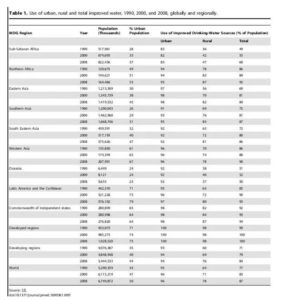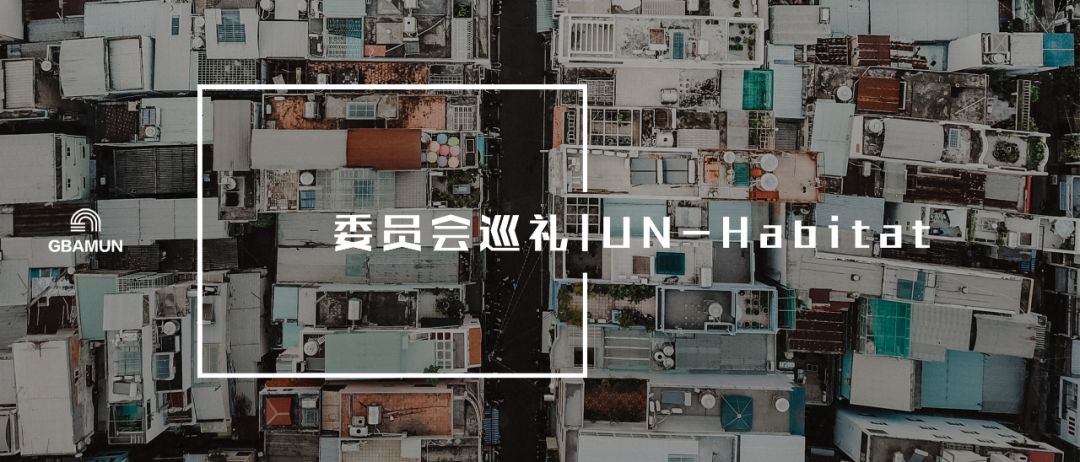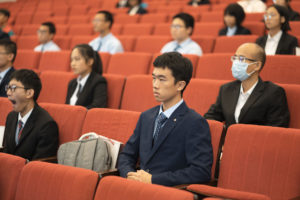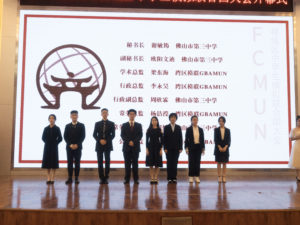Preface
Committee: UN-Habitat: United Nations Human Settlements Programme
Topic1: Housing and slum upgrading
Topic2: Water and Sanitation
Representation: 50, Mixed Delegation
Time Frame: Jan.2020
Language: English
The fundamental issue in urban development and slum upgrading is related to the growing number of urban residents and how housing and infrastructure services can be financed for the future urban generations. Water, Sanitation and Hygiene, or WASH, are issues that affect the health and wellbeing of every person in the world. Everyone needs clean water to drink. Everyone needs a safe place to pee and poop. And everyone needs to be able to clean themselves. For many people, WASH concerns are taken for granted and their combined impact on life isn’t always appreciated. But for hundreds of millions of others, water, sanitation and hygiene are constant sources of stress and illness. The quality of water, sanitation and hygiene in a person’s life is directly correlated to poverty, as it is usually joined by lack of education, lack of opportunity and gender inequality. United Nations Human Settlements Programme (UN-Habitat) is a UN Programme about promoting socially and environmentally sustainable living. It focuses on dealing with all urbanization and settlements matters. UN-Habitat’s responsibilities include human rights into all aspects of its operational and normative work in order to encourage the implementation of international conventions at national, regional and municipal levels. The core concept of sustainable urban development is the rule of the law and the protection of vulnerable groups.
Dais Head:
程子纯 New York University
梁霈 University of Toronto
Dais Members:
陈煜墣 重庆第二外国语学校
刘令仪 北京一零一中学
Willie Wu 上海教科实验中学
1.Introduction
The United Nations Human Settlements Programme (Habitat), established in 1978, is the lead agency within the UN system for coordinating activities in the field of human settlement development. It also serves as the focal point for monitoring progress on implementation of the Habitat Agenda – the global plan of action adopted at the Second United Nations Conference on Human Settlements (Habitat II), held in Istanbul, Turkey in 1996.
Responsibilities
The past assembly had stated that “cities must be places where human beings lead fulfilling lives in dignity, good health, safety, happiness and hope,” it also formulated UN-Habitat’s (then still the Habitat Commission) current main twin goals, namely
1) to ensure adequate shelter for all.
2) to guarantee sound development of human settlements in an urbanizing world.
As a small agency with global responsibilities, UN-HABITAT needs to find ways of maximizing its impact; its resources must be focused, and policy principles and approaches must be strategic. These principles are derived from UN-HABITAT’s own experience of what works, and also from the experience of its partners, including National governments, local authorities, non-governmental organizations (NGOs), community organizations and the private sector.
In addition to its advocacy and monitoring function, UN-HABITAT also plays an important role in providing technical assistance to countries and cities in the areas of urban governance, housing, environmental management, disaster mitigation, post-conflict rehabilitation, urban safety, water management and poverty reduction.
Governance
UN-Habitat’s governance structure is a three-tier structure made up of the UN-Habitat Assembly, the Executive Board and the Committee of Permanent Representatives. The General Assembly of the United Nations in its resolution A/RES/73/239 decided to dissolve the Governing Council of the United Nations Human Settlements Programme and to replace it with a United Nations Habitat Assembly of the United Nations Human Settlements Programme (UN-Habitat Assembly).
UN-Habitat Assembly is a universal body composed of the 193 member states of the United Nations and convenes every four years at the Headquarters of UN-Habitat in Nairobi. The Executive Board is composed of 36 member states elected by the UN-Habitat Assembly and meets three times a year to increase the oversight by Member States of UN-Habitat operations. The Committee of Permanent Representatives of UN-Habitat (CPR) meets twice every four years in an open-ended manner. The three governing bodies together are intended to strengthen the accountability and transparency of UN-Habitat, and provide an effective oversight mechanism for UN-Habitat to enhance its normative and operational activities.
2.Key terms definition
Human rights
Human rights refer to all kinds of rights endowed to individuals or groups as human beings, regardless of race, nationality, gender, ethnic, linguistic, religious or any other status. The fundamental part of human rights is the right to survive. To protect this right, guaranteeing the basic conditions for survival such as housing and drinking water is necessary. The protection of basic human rights is the aim of all sorts of humanitarian assistance.
Infrastructure and housing services
Infrastructure refers to public services and facilities(e.g. buildings, roads, power supplies) provided to meet basic life needs of people. Housing services will be concerned when some immigrants and residents are undocumented. Their existence will be denied and neglected by the government which further prevent them from reaching infrastructure to support their life. UN-Habitat’s governance structure is a three-tier structure made up of the UN-Habitat Assembly, the Executive Board and the Committee of Permanent Representatives. The General Assembly of the United Nations in its resolution A/RES/73/239 decided to dissolve the Governing Council of the United Nations Human Settlements Programme and to replace it with a United Nations Habitat Assembly of the United Nations Human Settlements Programme (UN-Habitat Assembly).UN-Habitat Assembly is a universal body composed of the 193 member states of the United Nations and convenes every four years at the Headquarters of UN-Habitat in Nairobi. The Executive Board is composed of 36 member states elected by the UN-Habitat Assembly and meets three times a year to increase the oversight by Member States of UN-Habitat operations. The Committee of Permanent Representatives of UN-Habitat (CPR) meets twice every four years in an open-ended manner. The three governing bodies together are intended to strengthen the accountability and transparency of UN-Habitat, and provide an effective oversight mechanism for UN-Habitat to enhance its normative and operational activities.
Slums
Slums refer to informal (and often illegal) housing which are characterized by inaccessibility to basic services, overcrowded residence, unhealthy or unstable dwelling places. Most of the slums are lack of legal land tenure and registration which guarantee the residential rights of the residents. Besides, natural disasters like typhoons will seriously endanger the safety of slums. The growing number of slums results from the population growth that outpaces the rate the cites could meet the needs for housing.
Wash
Wash is the collective term of water, sanitation, and hygiene. The three parts are independent and play vital roles in ensuring the process of one another. The water issue mainly focuses on the accessibility of safe and clean drinking water. For sanitation, the separation of human waste with people is the main concern. In this case, to prevent “open defecation” by building toilets is important. For hygiene, the purpose is to cultivate good hygiene practices among all the people.
3.Housing and Slum Upgrading
Currently, the world endeavors to make persistent efforts on the progression of upgrading slums that are mostly economically underdeveloped where people have suffered greatly from poor housing and underdevelopment through financially supporting the refurbishment of slums to reach to the purpose of improving the housing conditions and offering more accesses and opportunities to public services and urban basic infrastructure.
As successful examples, municipality-initiated upgrading programs such as the one in Medellín, Colombia and in Rio’s Favela-Bairro, as well as the community-based Orangi Pilot Project in Karachi, Pakistan, led by architect Arif Hasan in the 1980s all suggest that these upgrades need professional architects. Architects have already risen to face the challenge and have led projects. Two initiatives in India–Charles Correa’s small Artist Village in Belapur (1983-86) and B.V. Doshi’s Aranya in Indore (1989) — stand out as early examples of upgrading programs, where communities are built with minimal infrastructure and dedicated for future expansion. In the minds of these architects, neighborhoods and cities should flourish over time. These precedents indicate the possibility to improve slums and poor-condition houses from the perspective of architects.
However, even with these preceded examples, other concerns should be addressed with alternative measures. With the rapid pace of urbanization in recent years, the scale of the urban housing challenge is increasing at a rate never experienced before in almost all countries global wide, considering the affordability and other potential illegality in terms of non-compliance with building, planning regulations. In response to this situation, two main innovative approaches namely shelter micro-finance and community funds have been implemented to render affordable housing finance and accommodations. Meanwhile, certain areas should require further research and innovative methods to identify the potential strategies to improve the current policies, regulations and the functioning of informal land markets. This is the ground for delegates.
4. Water and sanitation
Adequate access to water, sanitation, and hygiene (WASH) helps to create a healthy society and promotes urban health. Hundreds of millions of urban dwellers have inadequate provision for water, sanitation, and drainage, which contributes to very large disease burdens and numerous premature deaths each year. Less than half the population in most urban centers in Africa, Asia, and Latin America have water piped to their homes, and less than one-third have sanitation of good quality.

Among all the victims, women are especially vulnerable, as they are often responsible for collecting water. When communities lack access to clean water supplies, women and girls must take long and often treacherous journeys to ensure accessibility for their community. From the perspective of gender equality, improved access to safe water will set women free from this tedious work. As a result, women will be better off to participate in community decision making and have greater opportunities to make improvements in economics. Thus, access to clean water is critical to improving the status of women; improving their social status further improves their relationships with men. Access to clean water is a way of shifting power relationships that strengthens gender inequities.
Approximately one in four city residents worldwide live without improved sanitation. Improved sanitation is defined as access to water stations and facilities capable of properly disposing of human waste and excrement. 2.5 billion individuals do not have access to proper amenities to dispose of human excrement, which leads to contaminated water and promotes the spread of preventable diseases.
Basic services
The Joint Monitoring Programme for Water Supply, Sanitation and Hygiene (JMP) has produced regular estimates of national, regional and global progress on drinking water, sanitation and hygiene (WASH) since 1990. The JMP service ‘ladders’ enable benchmarking and comparison of progress across countries at different stages of development.

844 million people still lacked even a basic drinking water service; 263 million people spent over 30 minutes per round trip to collect water from an improved source (constituting a limited drinking water service); 159 million people still collected drinking water directly from surface water sources.
Without adequate access to WASH, urban health is at risk. If we take ‘adequate’ water to mean a regular piped supply available within the home or in the yard, at least half of the urban population of sub-Saharan Africa and Southeast Asia has inadequate provision (and perhaps substantially more than this); if we took ‘adequate’ sanitation to mean an easily maintained toilet in each person’s home with provision for hand-washing and the safe removal and disposal of toilet wastes, a very large proportion of the urban population of sub-Saharan Africa (50–60 per cent?) and more than half of the urban population in most low-income nations in Asia and Latin America is likely to have inadequate provision.
5.Reference




